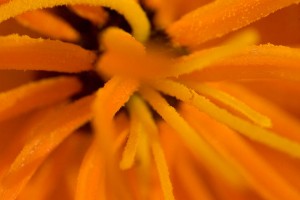First I want to say that I received the latest issue of Photo Technique Magazine yesterday, with my new article in it. This is the May/June issue and I hope you’ll pick it up. I really like the layout.
The macro/micro techniques I’ve been discussing in the last few weeks could easily have been done with a 50mm f1.8 lens. In fact, for use with bellows or an extension tube or a reverse mounting ring this is a very effective lens. The thing is that there are many other lenses that you could use and some of them are better. Most camera lenses are designed to focus at infinity. If you want the lens to focus much closer than it is good to optimize the spacing between elements to achieve that. I am not familiar with any lens that changes its internal geometry to continuously optimize the lens as you get closer. I don’t think it would be practical to attempt this for the small benefit it would provide. Still there are many lenses that have been designed to focus at a very close distances, but these lenses don’t work well at infinity.
The problem is how can we adapt these lenses to a modern digital camera? Since there are two lens mounts that are common for lenses that would work for micro imaging we really only need two kinds of adapters. First the two lenses: enlarging lenses and microscope lenses. Enlarging lenses were meant for traditional photographic enlargers. The distance between the negative and the photo paper was small, so these lenses were optimized for close work. Common focal lengths are in the range from 50mm to 135mm. These lenses would work well with extension tubes or bellows. High quality enlarging lenses, from Nikon and Schneider, are often available for reasonable prices. Almost all enlarging lenses were made with a simple 39mm thread mount. This is called the Leica Thread mount.
Microscope lenses are obviously designed for extremely close work. You can shoot with just an objective lens, with out the eyepiece. This gets you a considerable enlargement of your subject onto the sensor. The best lens for most situations is a 4X lens, as stronger lenses require you to be too close to the subject. A PLAN lens is very well corrected and would give excellent results. I will be talking about shooting with a complete microscope in another blog. Most microscope lenses also use a common thread, called DIN. In addition to lenses designed for microscopy there are some large format micro lenses that use this thread. Zeiss made a lens called the Luminar, which is extremely fine and uses this thread. I own a 63mm Luminar that has given me excellent results. There have also been other micro lenses that used this thread including the Micro Tessar from Bausch and Lomb. One advantage these lenses have over the microscope lenses is an adjustable diaphragm.
So the problem is how to mount Leica Tread and DIN lenses to a Nikon, Canon or whatever. The answer is actually two adapters. The first step is to covert the lens thread to a T-mount. This was a standard mount developed decades ago to allow secondary manufacturers to make lenses for several cameras. Since the mount doesn’t allow for any automation, aperture, focus and so on, the mount is little used. You still see them on mirror lenses, which don’t have auto focus and don’t have adjustable diaphragms. Anyway this adapter will allow you to mount a DIN microscope lens to T-mount: http://www.edmundoptics.com/onlinecatalog/displayproduct.cfm?productID=1968&PageNum=1&StartRow=1. I have now spent over an hour trying to find a Leica M39 thread to T-mount adapter. Actually finding one was easy. I have one right here in front of me. I can’t find a link to buy one. If you can find a link let me know, so I can update this. For T-mount adapters, from the T-mount thread to Nikon, Canon and so on, you can go many places. I usually buy these from Surplus Shed (www.surplusshed.com).
 I’ve attached a couple of pictures with the 63mm Zeiss Luminar, microscope thread to extension tube; and a picture with a 28mm Schneider Enlarging lens. I have no idea what the 28mm enlarging lens was actually designed to do, since it is too short for most enlargers.
I’ve attached a couple of pictures with the 63mm Zeiss Luminar, microscope thread to extension tube; and a picture with a 28mm Schneider Enlarging lens. I have no idea what the 28mm enlarging lens was actually designed to do, since it is too short for most enlargers.
Please check out my classes at BetterPhoto. You can still sign up for the current session!
An Introduction to Photographic Lighting
Portrait Lighting on Location and in the Studio


